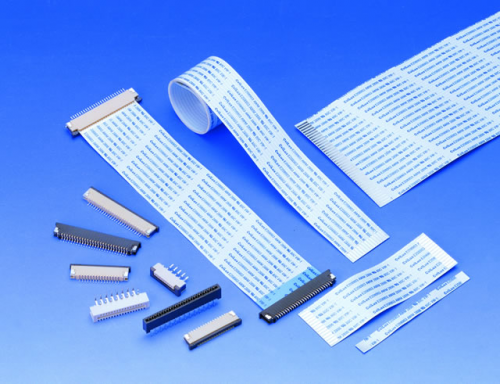FPC & FFC: Pioneers in Miniaturization Technology
As electronic devices evolve to become smaller and more portable, FPCs (Flexible Printed Circuits) and FFCs (Flat Flexible Cables) are leading the miniaturization revolution in the electronics industry as key components. They not only provide unprecedented design freedom, but also meet the dual demands of high performance and reliability of modern electronic products through their superior flexibility and integration.

The ultimate in design flexibility
The core advantage of FPC and FFC lies in their extraordinary flexibility: FPC builds complex and delicate circuit structures by etching copper conductors on a flexible substrate, while FFC simplifies the production process by embedding flat conductors directly into the flexible insulating layer. Both technologies enable seamless integration of circuits and devices, maintaining a stable electrical connection whether bent, folded or twisted, providing designers with a wide range of creative possibilities.
Superior performance underpinned by precision craftsmanship
The outstanding performance of FPC and FFC cannot be separated from the precise manufacturing process. FPC manufacturing involves copper coating, etching, insulating layer stacking and other links, each step needs to be strictly controlled to ensure quality; while FFC through the lamination technology will be closely combined with the conductive layer and the insulating layer to form a strong and durable structure. These processes not only ensure the stability and reliability of the product, but also promote the application of FPC and FFC in a wider range of areas.
Wide penetration of cross-industry applications
The flexibility and miniaturization of FPCs and FFCs have made them shine in multiple industry sectors. In the field of consumer electronics, they become the standard for portable devices such as smartphones and tablet PCs; in the automotive industry, they help integrate and optimize advanced driver assistance systems and infotainment systems; and in the medical field, they are used in diagnostic equipment and health monitors to ensure accurate and timely data transmission. In addition, industrial automation, robotics, aerospace and other fields have also witnessed the widespread use of FPC and FFC.
Flexible Connectors: Drivers of Innovative Design
The use of FPC and FFC in connector design is driving a wave of innovative design. They act as flexible extensions of the connector, not only reducing the footprint, but also increasing the durability and reliability of the product. By precisely controlling the bend radius and conductor layout, designers are able to create more compact and flexible electronic products. At the same time, the introduction of flexible connectors also simplifies the assembly process, reduces production costs and improves productivity.
Zero Insertion Force Connectors and the Future of Foldable Devices
As technology continues to advance, FPCs and FFCs are increasingly being used in Zero Insertion Force (ZIF) connectors and foldable devices. ZIF connectors utilize the flexibility of FPCs and FFCs to achieve a more reliable and user-friendly experience, while foldable devices require connectors that can withstand repeated bending and flexing without compromising performance, and FPCs and FFCs are ideal solutions for this challenge. FPC and FFC are the ideal solutions for this challenge. They not only ensure a stable connection and electrical transmission of the device, but also provide unlimited possibilities for future electronic product design.










